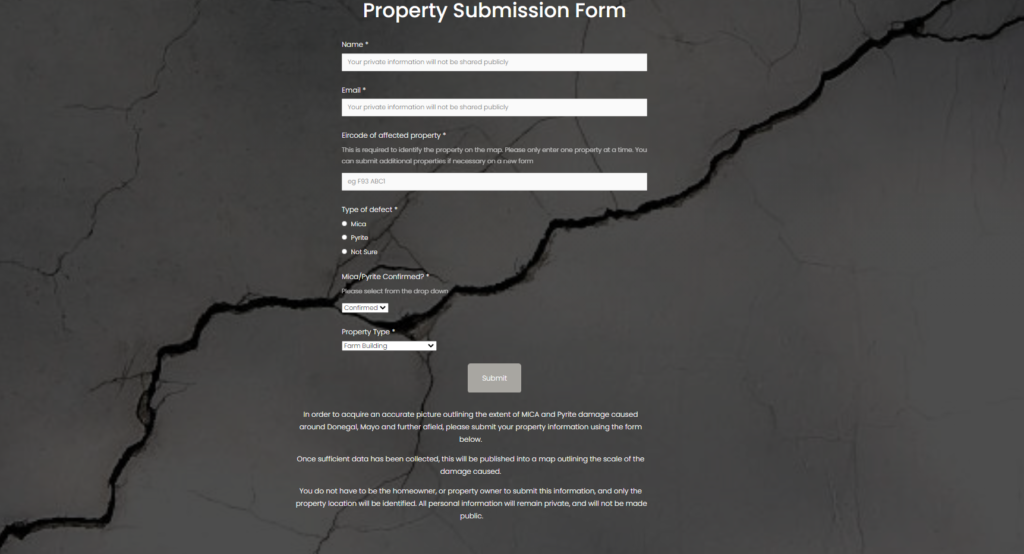A web designer from Buncrana in Co. Donegal has created a ‘mica map’ with the aim of showing the extent of the damage to properties impacted by the naturally occurring mineral, muscovite mica. The map will also record properties impacted by pyrite.
Currently the map has identified 1,150 properties – since Friday last – located primarily in Donegal, as well as Mayo that are affected. So far, the vast majority are homes.
But it is believed that hundreds of farm buildings, and an unknown number of other structures are also impacted.
Agriland spoke to pig farmer, Jimmy Mooney about the devastating impact of mica on his piggery. You can read about it here.
In response, map creator, Ryan Stewart, is calling on farmers to also complete the submission form so that a comprehensive picture of the problem can be illustrated.
In addition to identifying residential and farm buildings, the map seeks to record commercial; local authority, community; private tenanted property; and garages/sheds.

Mica map – highlighting the issue
“I just wanted to help out a bit if I could,” Ryan explained to Agriland.
“I created this map to get an idea of the scale of this problem, because it is not only houses that are affected.
“And we want to be able to give those who still cannot understand the impact of this, a clearer picture of how widespread the problem is.”
Mica march
Currently, a campaign is underway to secure 100% redress for thousands of homes in Donegal, and Mayo, that have been impacted by mica-defective concrete blocks.
Campaigners will travel to Dublin tomorrow (June 15) and will highlight their demands outside the Convention Centre where the Dáil is currently sitting.
A €20m redress scheme that has been introduced to help homeowners and families cover mica-caused repair-and-rebuild costs has been described by critics as not fit for purpose.
Under the current terms of the scheme, which encompasses domestic homes only, the government will cover 90% of the costs incurred, while the homeowner must cover 10%, in addition to engineer fees.
Ryan said he supports the 100% redress call and hopes that the map he is creating can help the cause.
He is personally impacted too, as his rented accommodation has signs of mica – spider-web cracks and dampness.
Map update
“I want to show how far and wide this problem is and I am calling on farmers – and anybody whose property is impacted – to complete the form.”
The map will go live shortly and will be updated twice daily. For more information and to submit property, click here
